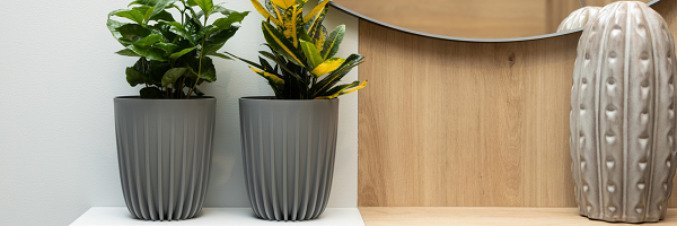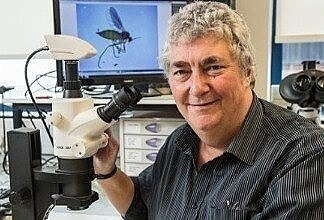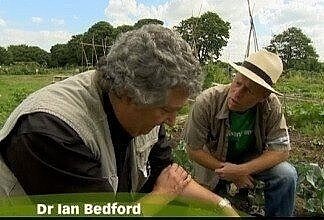
How to spot and control common houseplant pests
5 Minute Read
Dr Ian Bedford tells us everything we need to know about the 'bugs of the month' for April, common houseplant pests.Whilst the many plant-related jobs within a garden will vary throughout the year, those associated with houseplants will remain constant all year round and will primarily involve watering, feeding and perhaps pruning as and when required. But probably the most important job with houseplants is to remain vigilant for the appearance of plant pests and to deal with them before they become a damaging infestation.
The most common houseplant pests are invariably small, delicate invertebrates that feed on the plant’s sap or the contents of its cells. These include aphids, whiteflies, scale insects, mealybugs, and spider mites.
These plant pests can often first appear on houseplants after spreading from an already infested plant that had been taken into the house, or they might have entered through an open window during the summer months, or even inadvertently been brought into the house on clothing when returning from the garden or a greenhouse.
Once inside, having found a suitable host plant, they’ll usually be able to survive and reproduce all year round where they’ll be protected from natural predators and the lethal outdoor temperatures of winter. But, if houseplants are to be cared for, pest infestations must be found and dealt with as soon as possible, since if left uncontrolled, they could rapidly increase to the point where an affected plant is severely weakened and dies.
However, this won’t always be easy, since the initial infestations of these types of plant pests will be small and often begin within the nooks, crannies and leaf folds of a plant where they can go unnoticed.

Early signs of houseplant pest infestations
There are some signs to look out for which can indicate the presence of an early infestation and indicate the location where it could be found and treated on the plant.
For the sap-sucking plant pests, such as aphids, whiteflies, mealybugs and scale, an early sign will be the appearance of small sticky droplets on the upper surface of lower leaves and surrounding areas. These droplets will be sugars and amino acids that are excreted by these insects as they feed on the plant’s sap. Known as Honeydew, the droplets contaminate the surfaces below the infestation where eventually black moulds begin to grow and spread.
A thorough inspection of the plant’s lower leaf surfaces, stems and leaf bracts above this honeydew contamination, will usually reveal the location of the infestation.
For spider mites, the early signs of an infestation will start with the appearance of small necrotic speckling on the leaf surfaces where the spider mites feed on the contents of mesophyll cells, particularly around the leaf edges. As the infestation increases, strings of fine silk webbing will become visible around the leaf edges too.
By inspecting the undersides of these leaves, using a magnifying glass or a jeweller’s loupe, the tiny spider mites should be visible as they crawl around the leaf. Their small spherical clear eggs will also be seen.
How to treat and protect your plants from pests
If an infestation of any of these plant pests has become severe, then the most heavily infested leaves should be removed and disposed of if possible.
The rest of the plant could then be treated with a proprietary pesticide that has been approved for use on the pest within a home environment. The non-toxic surfactant-based product SB Plant Invigorator is one such product that effectively and safely controls these common houseplant pests.

About Dr Ian Bedford
Ian has been fascinated by the bug world for as long as he can remember. From studying butterflies on the South Downs as a youngster, he went on to pursue a career in Research Entomology and ran the Entomology Dept at the John Innes Centre in Norwich up until his recent retirement.VISIT WEBSITE
 'Bug of the month'
'Bug of the month' Visit our 'bug of the month' archive.
Every month Ian will share his knowledge on how to protect your plants and gardens from preventable pest invasions while providing valuable insights into the insects regularly found in our gardens.
Comments (0)
Why not be the first to send us your thoughts?
Leave A Comment
Most popular articles
1
Plastic plant pots dimensions and uses2
Peat vs Peat Free - Choosing the right Potting Compost3
How to Grow Watercress at home in plant pots4
January Jobs5
Our guide to seed sowing compost